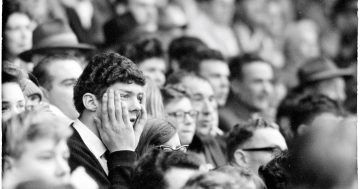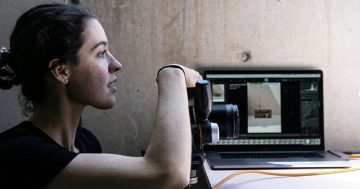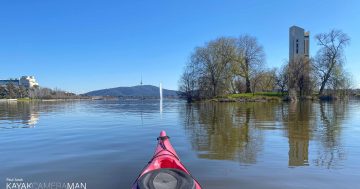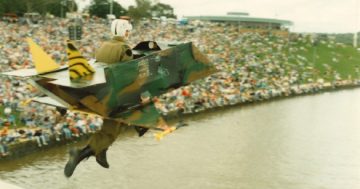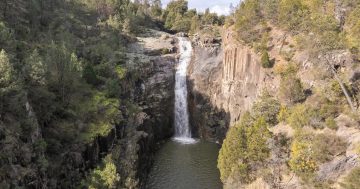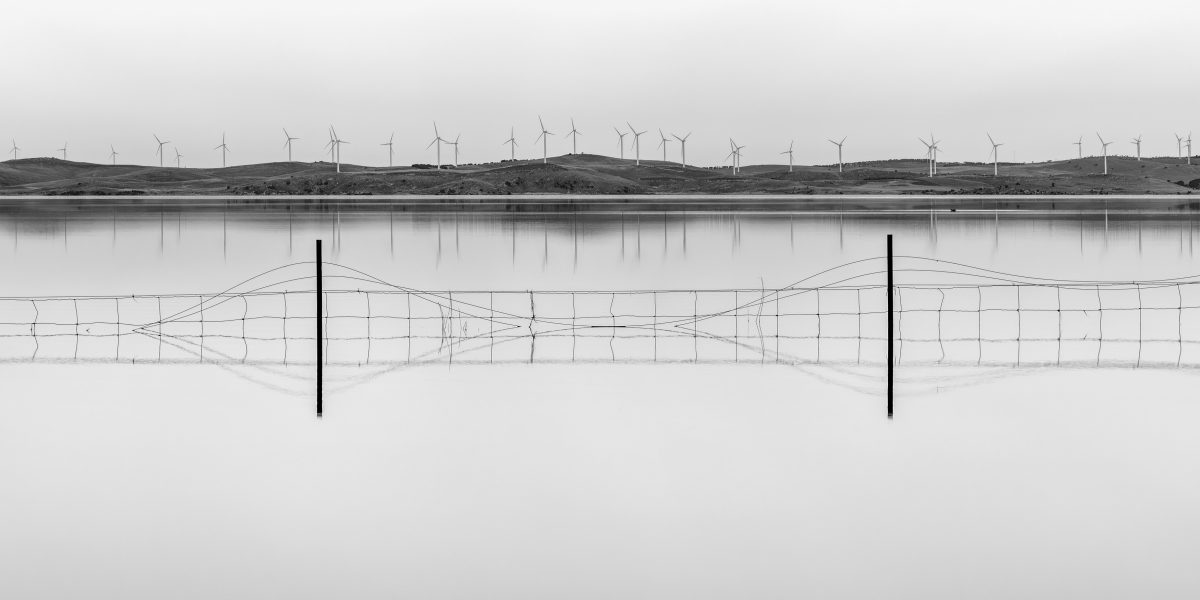
Canberra photographer Wade Cramer has won the 2024 Mono Award for his black-and-white image of Lake George. Photo: Wade Cramer.
Wade Cramer reckons things happen for a reason.
For years, when he and his family drove home to Canberra past Lake George, Wade, a photographer, always thought about stopping.
From when the lake was just a cracked expanse from years of drought to more recently when flooding rains started filling it up, he knew there was a photograph there.
Coming back to Canberra on a late June afternoon last year, Wade did stop.
“I had to,” he said. “I just couldn’t go past what I saw.”
It was the unusual sight of the lake near full. So rare was it that it took on an almost spiritual moment. Other cars stopped, too, to experience nature at her best.
“We were there for about an hour,” Wade said. “Sometimes when we go somewhere because I want to get a picture, my wife rushes me, but not this time. She’s a wombat carer and wanted to stop because she saw some long green grass down there to take home for our wombats.
“But I knew I was going to stop anyway. It was just one of those moments.”
Wade’s image of this Lake George moment, Flooded Fences – a composite of two shots taken with a Nikon D850 – has just won the 2024 Mono Award in the Places Category, bringing with it a $5000 prize purse.
In its sixth year, the annual photographic competition continues to draw the cream of the nation’s black and white photographers. The judges described Wade’s work as “a powerful and technically perfect panorama”.
“It’s funny how these things happen for a reason,” said Wade, a former software engineer who now works as a photographer full-time.
“Everyone does it when they come back to Canberra and go past the lake … when you see how special it looks, you always say ‘let’s stop’, but you never do. I am so glad we did on that day.
“It was late in the afternoon, and when we came over the horizon, I couldn’t believe how beautiful the lake looked. It was as still as a mirror.
“I’ve heard stories of the Ngunnawal people saying Lake George is connected to another lake. How when Lake George is full, another lake is empty, and then the other way around again.
“The photograph is a composite of two shots. First, I focused on the fence and then on the horizon. I wanted them both to be in crisp focus and to have balance in the photo. For me, the editing process is as important as capturing the actual moment.”
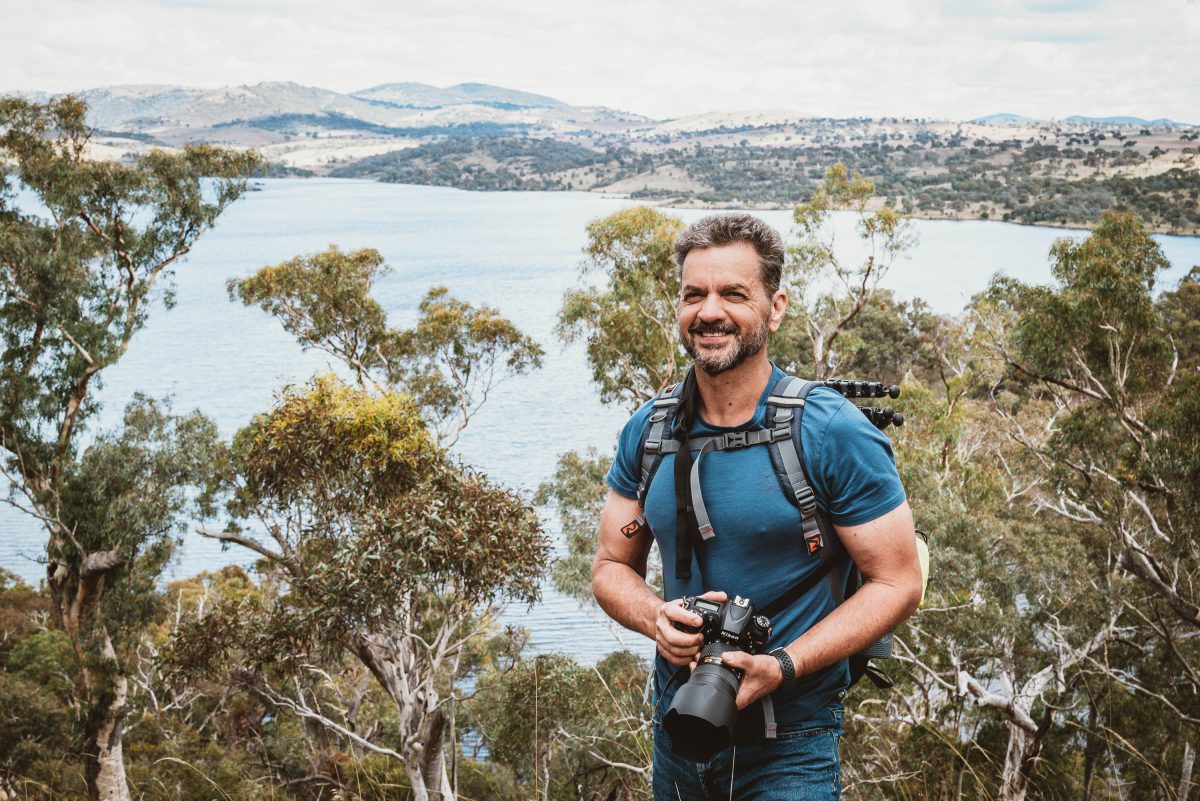
Canberra photographer Wade Cramer has won the 2024 Mono Prize for his black-and-white image of Lake George. Photo: Supplied.
He used a technique called focus stacking which can help create a better depth of field by stacking two images together.
“If I’d zoomed in on one end or the other, I would have lost that detail.”
In his application form for the competition, he wrote: “We stopped as we had never seen the lake so calm. There was such great light, and when I took the shot, I had a monochrome image in mind.
“There is a beauty to the fence wires as they flow in and out of the water and then there is that juxtaposition between the flooding caused by lots of rain, a symptom of climate change and the wind turbines as a possible solution to climate change.”
Wade migrated to Australia in 2011 from South Africa to give his family a better life, “and that’s what Canberra did for us”.
He can’t remember not taking photos. He still has his mother’s Box Brownie camera and readily admits he was a late embracer to digital photography.
“The first one I worked with was 4 megapixels, and that just didn’t cut it for me. I actually didn’t think digital would take off,” he laughed.
It didn’t take Wade long, after moving to Canberra, to “get” that there were two locations in the region that held particular meanings to locals – one of which will always remain special – Lake George.
The other? Pooh’s Corner on Clyde Mountain. “When people ask you to explain why they have such meaning to Canberrans, it’s hard to answer in words, but they do. Today, perhaps one more than the nother.”
Original Article published by Sally Hopman on Riotact.


